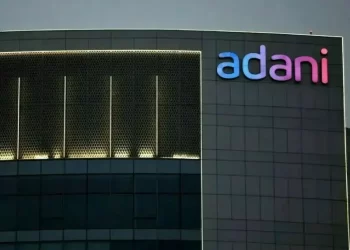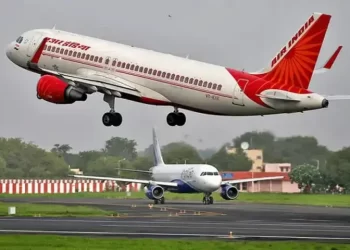WASHINGTON (news agencies) — A string of security, logistical and weather problems has battered the plan to deliver desperately needed humanitarian aid to Gaza through a U.S. military-built pier.
Broken apart by strong winds and heavy seas just over a week after it became operational, the project faces criticism that it hasn’t lived up to its initial billing or its $320 million price tag.
U.S. officials say, however, that the steel causeway connected to the beach in Gaza and the floating pier are being repaired and reassembled at a port in southern Israel, then will be reinstalled and working again next week.
While early Pentagon estimates suggested the pier could deliver up to 150 truckloads of aid a day when in full operation, that has yet to happen. Bad weather has hampered progress getting aid into Gaza from the pier, while the Israeli offensive in the southern city of Rafah has made it difficult, if not impossible at times, to get aid into the region by land routes.
Aid groups have had mixed reactions — both welcoming any amount of aid for starving Palestinians besieged by the nearly eight-month-old Israel-Hamas war and decrying the pier as a distraction that took pressure off Israel to open more border crossings, which are far more productive.
It’s “a side-show,” said Bob Kitchen, a top official of the International Rescue Committee.
The Biden administration has said from the start that the pier wasn’t meant to be a total solution and that any amount of aid helps.
“Nobody said at the outset that it was going to be a panacea for all the humanitarian assistance problems that still exist in Gaza,” national security spokesman John Kirby said Wednesday. “I think sometimes there’s an expectation of the U.S. military — because they’re so good — that everything that they touch is just going to turn to gold in an instant.”
“We knew going in that this was going to be tough stuff,” he added. “And it has proven to be tough stuff.”
Before the war, Gaza was getting about 500 truckloads of aid on average every day. The United States Agency for International Development says it needs a steady flow of 600 trucks a day to ease the struggle for food and bring people back from the brink of famine.
The aid brought through the pier was enough to feed thousands for a month, but U.N. data shows it barely made a dent in the overall need of Gaza’s 2.3 million people.
Here’s a look at the timeline of the pier, the problems it faced and what may come next:
MARCH 7: President Joe Biden announces his plan for the U.S. military to build a pier during his State of the Union address.
“Tonight, I’m directing the U.S. military to lead an emergency mission to establish a temporary pier in the Mediterranean on the coast of Gaza that can receive large shipments carrying food, water, medicine and temporary shelters,” he said.
But even in those first few moments, he noted the pier would increase the amount of humanitarian aid getting into Gaza but that Israel “must do its part” and let more aid in.
MARCH 8: Maj. Gen. Pat Ryder, Pentagon spokesman, tells reporters it will take “up to 60 days” to deploy the forces and build the project.
MARCH 12: Four U.S. Army boats loaded with tons of equipment and steel pier segments leave Joint Base Langley-Eustis in Virginia and head to the Atlantic Ocean for what is expected to be a monthlong voyage to Gaza.
The brigade’s commander, Army Col. Sam Miller, warns that the transit and construction will be heavily dependent on the weather and any high seas they encounter.
LATE MARCH: U.S. Army vessels hit high seas and rough weather as they cross the Atlantic, slowing their pace.
news agenciesRIL 1: Seven World Central Kitchen aid workers are killed in an Israeli airstrike as they travel in clearly marked vehicles on a delivery mission authorized by Israel.









